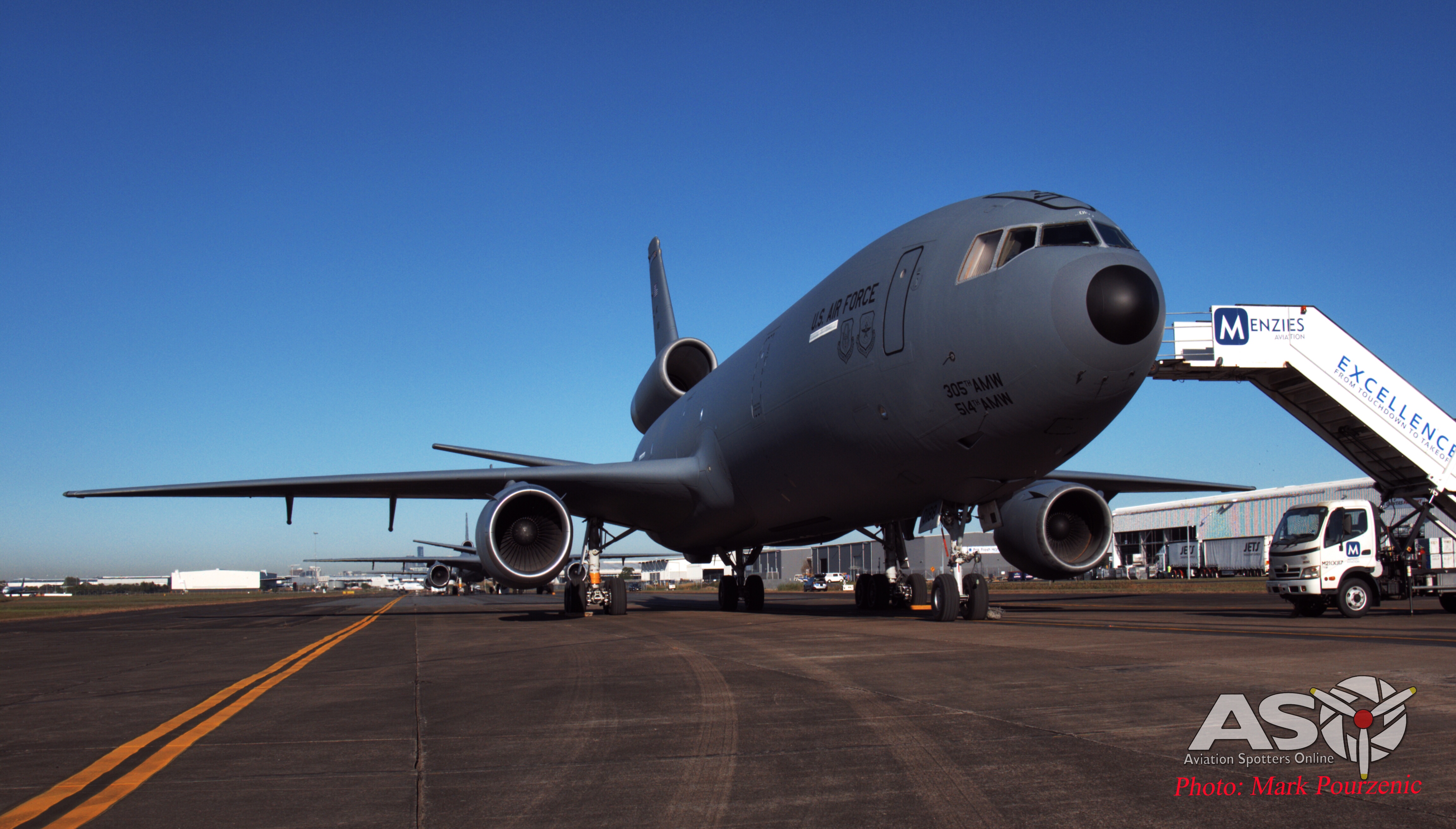With over 27,000 mission hours over the sands of Afghanistan the Royal Australian Air Force’s two Heron Remotely Piloted Unmanned Aircraft Systems (UAS) are seasoned campaigners in RAAF hands. The Israeli designed and built aircraft provides the intelligence, surveillance and reconnaissance capability to the RAAF and our allies without putting pilots or crew in harms way. It provides intelligence that helps keep our ground troops safer.
The aircraft was bought back to Australia in late 2014 and have been operating from RAAF Base Woomera in remote South Australia. With the aircraft types only other deployment being to Rockhampton, QLD during exercises last year.
During a recent 2 week operation of the aircraft from RAAF Base Amberley, ASO were invited to the base to witness the aircraft operating and meet some of the professional team who operate the aircraft.
While the RAAF’s highly trained pilots who operate these aircraft have safely racked up 1000’s of hours in Afghanistan they are now bringing the aircraft to Australian skies. The high-tech payload of sensors and cameras wont be needed to serve the same valuable troop protection role as it did overseas but operation of the aircraft will be used as an opportunity to work closely with civilian air traffic control, aviation authorities and civil aircraft operators to pave the way for the operation of soon to be acquired aircraft such as the Lockheed Triton. The RAAF are also wanting to foster public acceptance for having these remotely piloted aircraft flying around much the same way we are used to the manned military aircraft in our skies on a regular basis.
The Triton is a maritime version of Lockheed’s Global Hawk and Canberra have placed orders for a number of these to assist in the patrolling of Australia’s vast coastline.
With the imminent delivery of the Triton and other unmanned platforms being considered by Canberra the RAAF are using the Heron as the thin end of the wedge to ensure the integration of unmanned aircraft into Australian military and civil airspace. An opportunity to grow both public confidence and acceptance for seeing these aircraft over our cities and paddocks.
Since its demobilisation from Afghanistan the Heron has spent some time operating from Woomera in South Australia. During the 13th to the 22nd of April this year the UAS has been operated out of RAAF base Amberley. Amberley not only sits on the edge of the bustling city of Ipswich it is also home to a growing number of aircraft types that the Heron operated alongside, including C-17 Globemasters and F/A-18F Super Hornets.
The thin end of the wedge. The RAAF Heron paving the way for other RAAF remotely piloted aircraft like the Triton.
“Busy traffic” The RAAF’s heavy hauler, the C-17 Globemaster of RAAF 36SQN takes off from Amberley sharing the same runway and airspace used by the Heron.
The team and the tech behind the aircraft.
Wing Commander (WGCDR) Matthew Bowers faces the press to answer questions about his teams operations in Australian skies flanked by members 5 Flight, Payload Operator Flight Lieutenant (FLTLT) Nelle Sheridan and Pilot Flight Lieutenant (FLTLT) Jayson Nichols.
Wing Commander (WGCDR) Matthew Bowers said “.. the main focus of Heron is now to sustain and maintain the skills, the knowledge and capacity to operate remotely piloted aircraft. The focus of 5 Flight is to ensure that Heron can be operated safely throughout Australia and integrated with other aircraft in the airspace around Amberley and other airfields around Australia”
‘Good friends’ Not all the Heron Pilots are RAAF. Royal Canadian Air Force (RCAF) having recently decommissioned their Heron aircraft are creating cross skilling opportunities to the RAAF by providing their skilled crew members on exchange.
‘At the stick’ – inside the containerised remote cockpit known as the GCS where Pilot and Payload Controllers operate the aircraft from.
The RAAF’s future plans clearly include greater use of unmanned aircraft and it seems they are taking a very steady and professional approach to introduce this new technology that will benefit the fighting men and women of our defence force as well as have potential flow on effects to the civil arena.
Wing Commander Bowers finished by explaining his thoughts about the future of this technology “This is a really exciting capability and I know personally, I’ve operated remotely piloted aircraft for some years and we really are on the cutting edge of technology … for the young men and women or boys and girls, who might be in school right now, they are the future. There the ones who will come along and really take up these new exciting technologies and make them into something we couldn’t even imagine. So it’s an exciting future and I would certainly encourage any young boy or girl who is in High School right now to consider a career in aviation, but specifically with remotely piloted aircraft.”










Quite nice post, I definitely love this website,
keep on it.